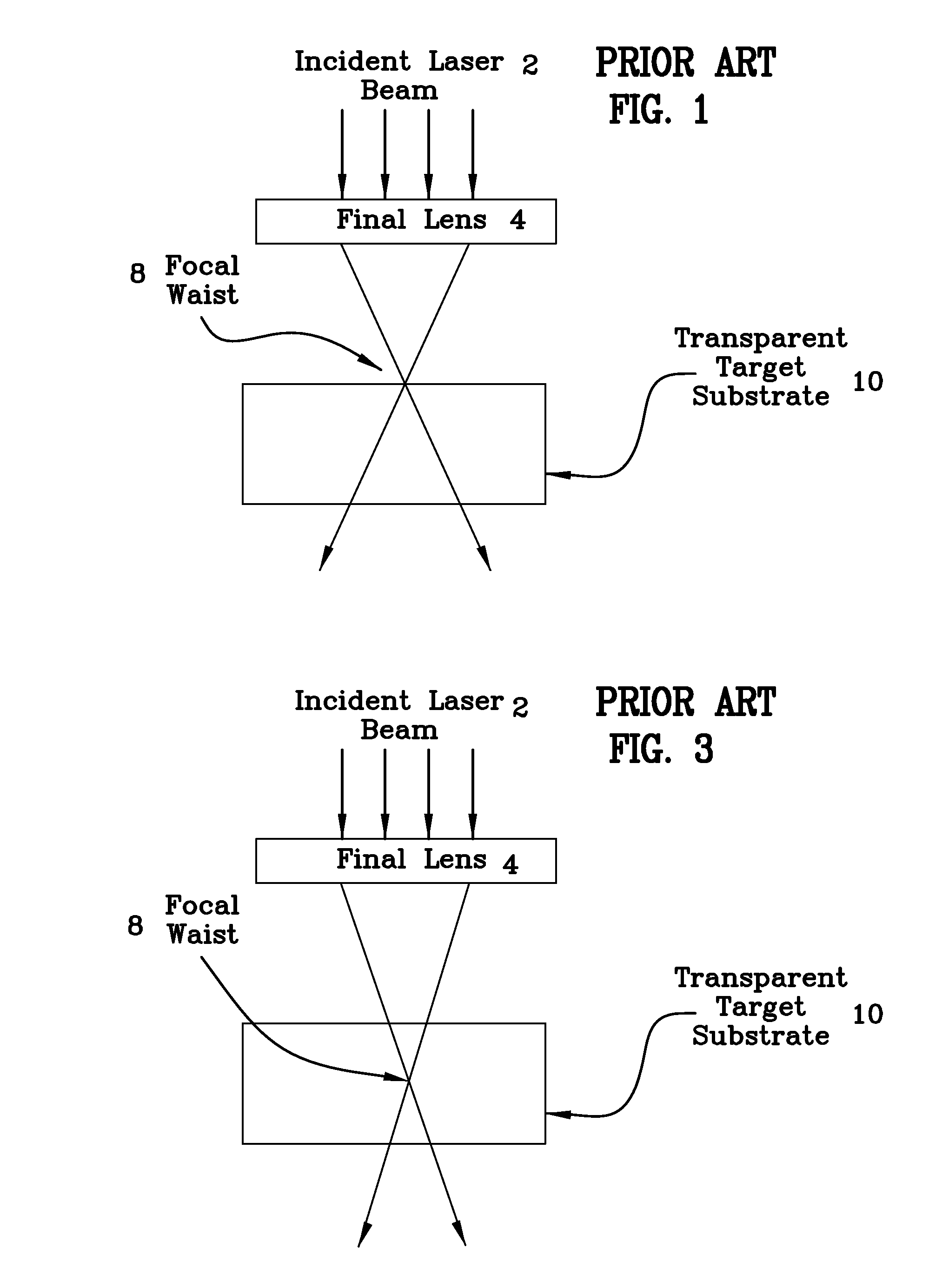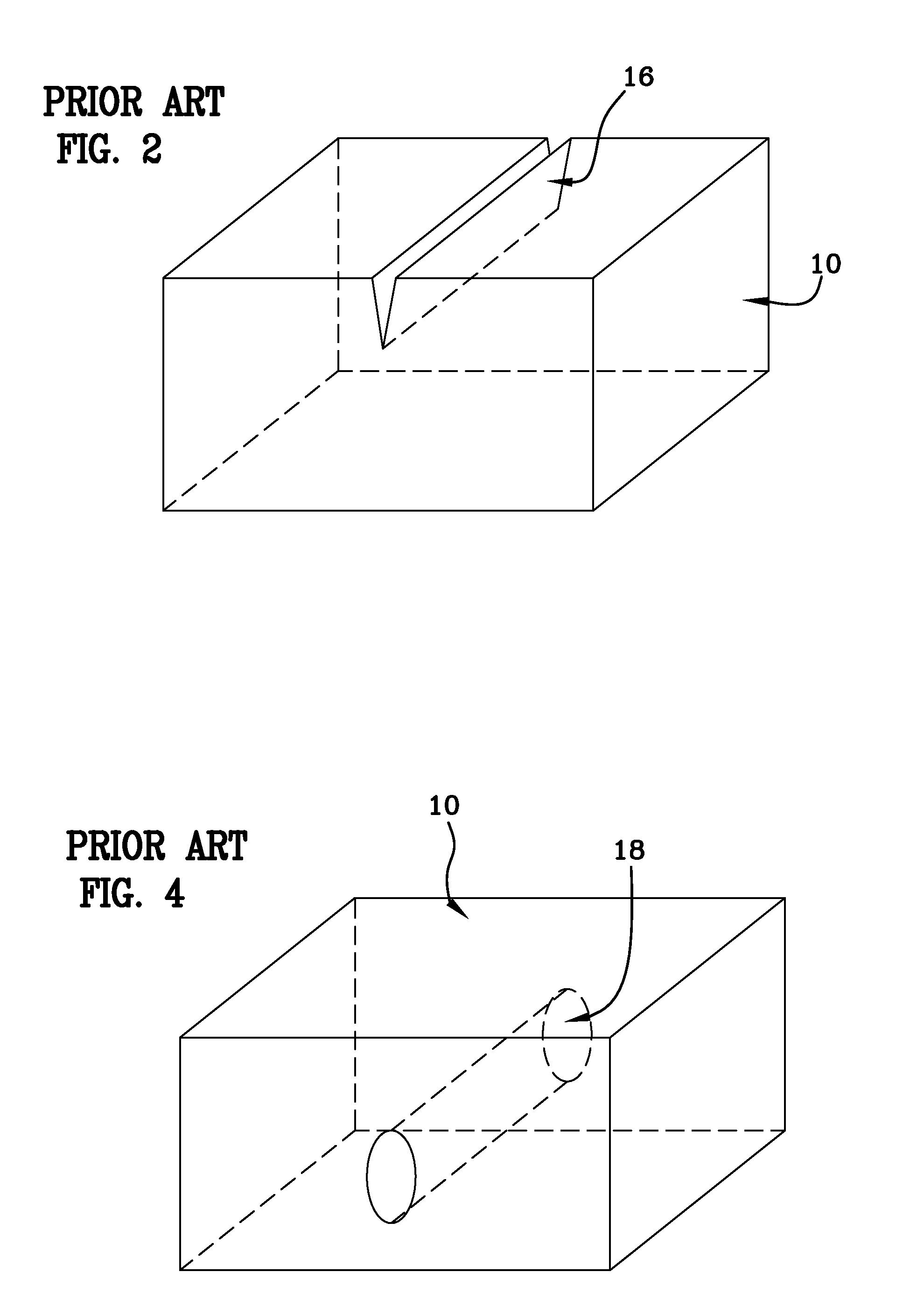Method of fabricating a glass magnetic hard drive disk platter using filamentation by burst ultrafast laser pulses
a laser pulse and laser pulse technology, applied in the direction of magnetic materials for record carriers, manufacturing tools, instruments, etc., can solve the problems of not allowing for further significant improvements, hds but is quite a bit more expensive than the other hdd substrate media, and achieves the effect of reducing the cost of fabrication
- Summary
- Abstract
- Description
- Claims
- Application Information
AI Technical Summary
Benefits of technology
Problems solved by technology
Method used
Image
Examples
Embodiment Construction
[0049]Currently, the prior art HDD platter fabricating systems produce glass platter blanks in a rough machined state through the use of a diamond saw. In the diamond cutting process, after diamond cutting is performed, a mechanical roller applies stress to propagate cracks that cleave the sample. This process creates poor quality edges, microcracks, wide kerf width, and substantial debris that are major disadvantages in the lifetime, efficiency, quality, and reliability of the product, while also incurring additional cleaning and polishing steps. The cost of de-ionized water to run the diamond scribers are more than the cost of ownership of the scriber and the technique is not environmentally friendly since water gets contaminated and needs refining, which further adds to the production cost. This first, rough machining step requires subsequent grinding and polishing of both the platter's peripheral edges and planar surfaces before the platter can proceed to the finish machining st...
PUM
| Property | Measurement | Unit |
|---|---|---|
| quasi-Rayleigh length | aaaaa | aaaaa |
| length | aaaaa | aaaaa |
| length | aaaaa | aaaaa |
Abstract
Description
Claims
Application Information
 Login to View More
Login to View More - R&D
- Intellectual Property
- Life Sciences
- Materials
- Tech Scout
- Unparalleled Data Quality
- Higher Quality Content
- 60% Fewer Hallucinations
Browse by: Latest US Patents, China's latest patents, Technical Efficacy Thesaurus, Application Domain, Technology Topic, Popular Technical Reports.
© 2025 PatSnap. All rights reserved.Legal|Privacy policy|Modern Slavery Act Transparency Statement|Sitemap|About US| Contact US: help@patsnap.com



